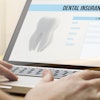A major challenge in designing useful clinical information systems in dentistry is to incorporate clinical evidence based on dentists' information needs, then integrate the system seamlessly into the clinical workflow. But little is known about the actual information needs of dentists during treatment sessions.
Thus researchers from the University of Pittsburgh set out to identify general dentists' information needs and the information sources they use in clinical settings (BMC Medical Informatics Decision Making, February 2, 2010).
They contacted 159 general dentists within the ZIP codes of the Pittsburgh area from a list of 228 ADA members by telephone or e-mail to invite them to participate in the study. No incentives were involved in the recruitment. From this they were able to obtain a convenience sample of 18 general dentists.
A semistructured interview was conducted with these 18 dentists during clinical hours, in which 105 patient cases were reported by the dentists. Interview transcripts were coded and analyzed using thematic analysis with a constant comparative method to identify categories and themes regarding information needs and information source use patterns.
Two top-level categories of information needs were identified: foreground and background information needs. To meet these needs, dentists used four types of information sources: clinical information/tasks, administrative tasks, patient education, and professional development.
Major themes of the dentists' unmet information needs included timely access to information on various subjects, better visual representations of dental problems, access to patient-specific evidence-based information, and accurate, complete, and consistent documentation of patient records.
Among the dentists' resource use patterns, the researchers found that little use of electronic sources took place during treatment and that the dentists routinely practiced cross-referencing to verify patient information.
"Dentists have various information needs at the point of care," the study authors noted. "Among them, the needs for better visual representation and patient-specific evidence-based information are mostly unmet. While patient records and support staff remain the most used information sources, electronic sources other than electronic dental records (EDR) are rarely utilized during patient visits."
For optimal patient outcomes, quicker access to comprehensive patient and insurance information, better visual representation of patient problems, and access to key evidence-based guidelines are required, they added. Thus system developers should consider integrating high-quality, up-to-date clinical evidence into comprehensive and easily accessible EDRs that offer easy access to relevant information at the point of care.
"For example, the development of a comprehensive but easily accessible electronic dental record integrated with high-quality, up-to-date clinical evidence and 2D or 3D visual representation capabilities is a promising direction," the authors noted.
Copyright © 2010 DrBicuspid.com















